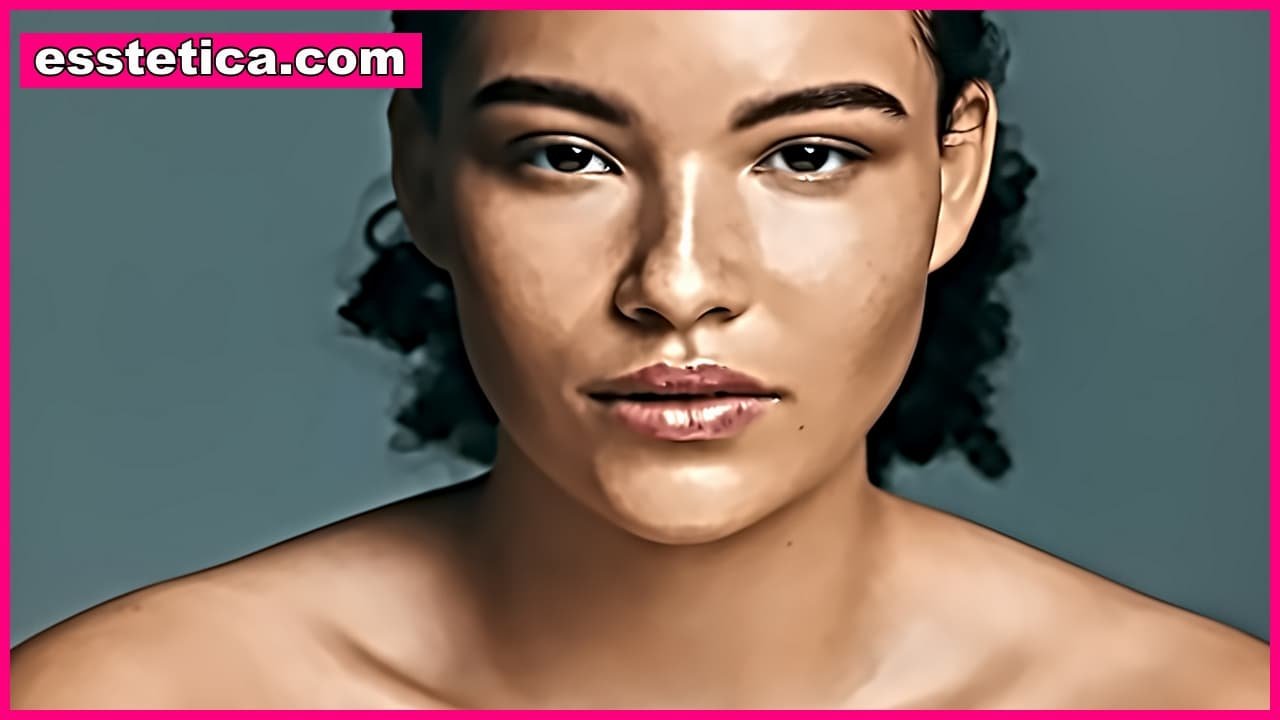Introduction
There’s a quiet kind of joy that comes with noticing your skin finally clearing up. The redness fades. The bumps smooth out. You catch yourself in the mirror and think—is it really over?
But here’s the thing: acne doesn’t just vanish overnight. It’s not like your skin suddenly decides to stop misbehaving one morning. When acne goes away, there’s a whole biological process unfolding beneath the surface—one that’s as fascinating as it is misunderstood.
Whether you’re in the middle of your breakout journey or finally seeing the light at the end of it, understanding what happens when acne goes away can help you keep your skin calm, confident, and clear for good.
The Science of Healing: What’s Actually Going On?
1. Inflammation starts to cool down
Acne begins with inflammation, and when it goes away, that inflammation is the first thing to settle.
Your immune system, which was in overdrive trying to fight off bacteria, starts to ease up. The redness fades, the swelling reduces, and the pain dulls. It’s your body’s way of saying, “Crisis averted.”
However, just because a pimple isn’t red anymore doesn’t mean it’s gone completely. Underneath, the skin is still repairing tiny tears and rebuilding collagen where the breakout occurred.
2. Sebum production starts to balance
When acne starts to fade, it often means your oil glands are finally getting the message.
Maybe your hormones have stabilized, maybe your skincare routine found its rhythm, or maybe your lifestyle shifted in a way that helps regulate sebum (the oily substance that clogs pores).
Balanced sebum = fewer breakouts.
But here’s the catch — if the oil production spikes again (due to stress, diet, or hormonal changes), new breakouts can form. So even when acne goes away, maintenance is key.
3. The bacteria population returns to normal
Our skin isn’t sterile — it’s a living ecosystem filled with microbes. When acne bacteria (Cutibacterium acnes) overpopulate, inflammation kicks in.
Once acne subsides, the skin’s microbiome slowly rebalances.
Think of it like a neighborhood calming down after a noisy party. The good bacteria return to keep the peace, helping prevent future chaos.
What You See When Acne Goes Away
1. The color changes first
One day, you notice your pimples aren’t as angry-looking. The redness begins to fade.
This is your skin signaling that inflammation is subsiding. However, it might leave behind a faint mark — called post-inflammatory erythema (PIE) or post-inflammatory hyperpigmentation (PIH).
Don’t panic. These marks aren’t permanent acne scars. They’re just leftover pigment or dilated blood vessels that will fade with time, especially if you protect your skin from the sun.
2. The texture smooths out — slowly
After a breakout heals, your skin’s surface may still feel uneven.
This is because collagen fibers are working overtime to rebuild the damaged area.
If you’ve ever run your fingers over an area that once had acne and felt a faint bump or dip, that’s your skin still mending itself.
Gentle exfoliation, hydrating ingredients (like hyaluronic acid), and patience go a long way here.
3. Dryness or peeling might occur
Ironically, when acne goes away, your skin might look worse before it looks better.
As inflammation resolves, old, dead skin cells start shedding more rapidly. You might see flakiness or mild peeling.
That’s actually a sign of renewal. Just make sure you’re moisturizing enough — you want to support healing, not strip it away.

✅ Struggling with acne? Discover the 2 natural solutions I personally recommend:
👉 Get Ninja Health Now — Launch Your Health Site in 60 Seconds
How Long Does It Take for Acne to Go Away?
There’s no single answer — it depends on what’s causing your acne and how your skin heals.
Let’s break it down:
Mild acne:
Small whiteheads and blackheads can disappear in a few days to a week with proper cleansing and treatment.
Moderate acne:
Inflamed pimples and papules often take 1–3 weeks to fade, but marks can linger longer.
Severe acne (nodules or cysts):
These can take months to heal completely and sometimes leave scars. Even when the bump disappears, deeper healing continues beneath the skin for several more weeks.
Patience isn’t just a virtue in skincare — it’s a necessity.
Signs Your Acne Is Truly Going Away
Sometimes it’s hard to tell if your skin is improving or just taking a break.
Here are a few ways to know when your acne is really healing:
✔️ Less inflammation and redness
Your skin tone starts evening out, and new pimples are smaller or less painful.
✔️ Fewer breakouts over time
If you’re noticing longer gaps between new pimples, that’s a great sign.
✔️ Skin feels smoother
Even if some discoloration remains, the surface texture improves first.
✔️ Reduced oiliness
When acne goes away, many people notice their T-zone isn’t as shiny or congested.
But Wait — Why Does Acne Come Back?
If you’ve ever thought your acne was gone for good, only for a surprise breakout to appear weeks later, you’re not alone.
1. Hormonal fluctuations
Hormones are one of the biggest culprits behind recurring acne, especially around menstrual cycles, pregnancy, or stress.
2. Poor barrier recovery
After acne heals, your skin barrier may still be fragile. If you use harsh products or skip moisturizer, that barrier can weaken — inviting bacteria back in.
3. Hidden triggers
Diet (like dairy or high-glycemic foods), lack of sleep, or even dirty pillowcases can cause flare-ups when your skin is in a vulnerable post-healing phase.
4. Stopping treatment too early
Many people quit acne products once their skin clears up, but the key is maintenance.
Continue with gentle exfoliation, retinoids, or non-comedogenic skincare to keep pores clear.
The Emotional Side of Acne Healing
When acne goes away, relief doesn’t always come immediately.
You’ve spent weeks — maybe years — battling your reflection. So when the acne fades, it can feel surreal. Some people even struggle with “skin anxiety,” still expecting to wake up to new breakouts.
That’s normal. Healing your skin also means healing your relationship with it.
Try this: take photos of your progress once a week. You’ll start seeing improvement you might not notice day-to-day. And remember — perfect skin doesn’t exist. Calm, healthy skin does.
What to Do After Acne Goes Away
So your skin is finally clear. Now what?
1. Focus on skin barrier repair
Use soothing ingredients like:
-
Ceramides
-
Niacinamide
-
Centella Asiatica
-
Panthenol
They help restore the protective layer your skin needs to stay resilient.
2. Treat leftover marks
For hyperpigmentation, look for:
-
Vitamin C
-
Azelaic acid
-
Licorice root extract
For red marks, calming peptides or gentle retinoids can help accelerate fading.
3. Maintain consistency
Keep a simple, balanced routine:
-
Cleanser: Gentle, sulfate-free
-
Moisturizer: Lightweight but hydrating
-
SPF: Every morning, no exceptions
-
Treatment (if needed): Retinoid or salicylic acid a few nights a week
4. Watch for new triggers
Even when acne goes away, your skin can change.
Seasonal shifts, hormonal cycles, or stress might cause new reactions. Keep a journal of flare-ups to spot patterns early.
When Acne Goes Away but Scars Remain
Sometimes acne leaves a mark that lingers even after the inflammation disappears.
This doesn’t mean your skin isn’t healing—it just needs a bit more help.
Types of acne scars:
-
Atrophic scars: Small depressions or “pits” in the skin.
-
Hypertrophic scars: Raised or firm areas.
-
Discoloration: Dark or red spots that fade slowly.
Treatment options:
-
Chemical peels
-
Microneedling
-
Laser therapy
-
Silicone gel or patches (for raised scars)
Always consult a dermatologist before trying in-office treatments. Timing matters — you don’t want to irritate skin that’s still repairing itself.
The Truth: Acne Never Just “Goes Away” — It Evolves
When acne goes away, what’s really happening is balance.
Your hormones, bacteria, oil production, and immune response are finally in sync.
But that balance can shift again — and that’s okay.
The goal isn’t to chase permanent perfection. It’s to understand your skin’s patterns and support it through its natural cycles.
Key Takeaways
✅ Acne fades gradually, starting with reduced inflammation and smoother texture.
✅ Marks or discoloration may linger, but they’re not permanent scars.
✅ Consistent skincare and barrier support help prevent recurrence.
✅ Hormones, stress, and lifestyle still influence your skin long after breakouts stop.
✅ Healing takes time — and it’s as emotional as it is physical.
Conclusion
When acne goes away, it’s more than just clear skin — it’s a transformation.
Your body, your habits, and your confidence all evolve together.
The journey might be long, with setbacks and small victories, but each healed spot tells a story: one of resilience, care, and self-awareness.
Because when acne goes away, it doesn’t just mean your skin is healing — you are, too.
✅ Struggling with acne? Discover the 2 natural solutions I personally recommend:
👉 Get Ninja Health Now — Launch Your Health Site in 60 Seconds
YOU MAY ALSO LIKE:




